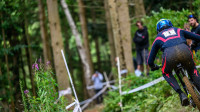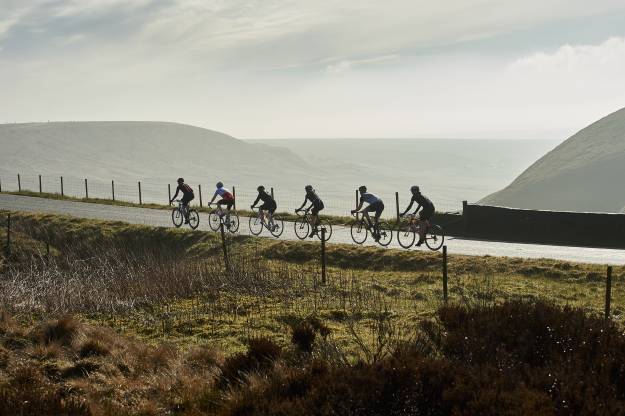Get Into Mountain Biking Home
Get A Bike | | Where To Ride | | Fix Your Bike | | Start Racing
Despite a lack of true mountainous terrain, and with a flourishing scene there are masses of options to get your off road fix. Open access forests, rights of way, natural trails and mountain bike centres offering waymarked routes for all abilities are the most popular ways of getting out on your bike and away from the predictability of the road. Whether taking the gravity assisted route to the summit on an uplift or gondola, or reaching the top under your own power and blasting back down, every mountain bike ride will be punctuated by a healthy dose of hanging around to talk rubbish and admire the views. That is the essence of being a mountain biker.
What is Mountain Biking?
If you ride your bike off road then you're a mountain biker. That statement best sums-up the most informal of all the cycling disciplines - one which almost totally disregards the typical club structure and is still the second most popular form of cycling.
Rather than being bound by an organisation or set riding times, mountain biking commonly takes the form of groups of riders or individuals going for pre-arranged rides typified by a location where good opportunities to ride off road exist. This could be a hillside, Forestry Commission land or National Park - all of which will have defined trails for riding.
The three main definitions of trails centre on how they were found, constructed and legality - or more concisely natural, man-made and ‘cheeky' trails - all of which will be ridden by a wide range of mountain bikers who separate each segment of the sport by racing discipline, the type of bike they ride and how long they ride for.
The Mountain Bike
Developed in the early eighties the modern mountain bike is a design classic, principally unchanged from the blueprint laid down by early pioneers Gary Fisher and Charlie Kelly - however cyclists were riding modified road bikes off road as early as the 1900s. Such was the state of the highways over a century ago road bikes were subjected to similar conditions as many would consider mountain biking today!
The greatest asset of owning a mountain bike is versatility. Capable of riding both on road and off, a good mountain bike has the potential - with a few subtle changes - to morph into a fast road machine or sturdy commuter. However, while a mountain bike will do many forms of cycling admirably, it is best suited to taking on rough terrain off road. A wide range of gears, wide knobbly tyres and a strong frame and wheelset are the traits of every mountain bike.
However, over the past two decades of mainstream mountain biking several genres have been born out of competition, marketing campaigns and rule-makers like the UCI. For simplicity it is easiest to categorise mountain biking into the four disciplines which are used in competitive cycling; cross country, downhill, fourcross and trials - however most mountain bike rides will involve a variety of all of these specialised aspects.
To go riding most mountain bikers will opt for a trail bike, which borrows the full suspension, disc brakes and handling from downhill bikes, with the weight, wider gearing and position of a cross country bike.
Most importantly though it is simple to mountain bike using any of the specialist designs for each discipline - each one with its own strengths and weaknesses relative to the trail you ride.
Pricing starts at £250 for a basic mountain bike - often without any suspension or disc brakes - which are commonplace by £600. Over £1000 the bikes become more segmented between the specialist disciplines, with custom built bikes made from carbon fibre and titanium touching five-figures.









